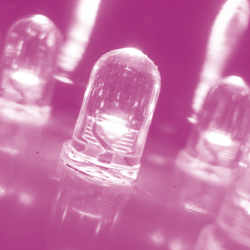Novel Simulation Approaches of Perovskite Optoelectronic Devices and Materials
 Metal-halide perovskites are a promising class of semiconducting materials for optoelectronics, such as solar cells and light-emitting diodes, due to their excellent optical and electronic properties, processability from both solution and vapor phase, and application-specific chemistry. In fact, perovskites are both excellent light emitters and show great promise for tandems with Si. However, several fundamental properties of these materials are yet to be fully understood as they can be difficult to probe experimentally. This includes the role of mobile ions on efficiency losses, the origin of degradation and self-healing, and why perovskites appear to be more defect-tolerant than other thin-film semiconductors. Fortunately, material and device modeling tools are powerful for understanding fundamental properties not directly available from experiments and can provide complementary insight. This Special Topic aims to publish contributions to material and device simulations that target the various unsolved questions regarding perovskites, whether numerical, first-principle, or ML/AI-informed.
Metal-halide perovskites are a promising class of semiconducting materials for optoelectronics, such as solar cells and light-emitting diodes, due to their excellent optical and electronic properties, processability from both solution and vapor phase, and application-specific chemistry. In fact, perovskites are both excellent light emitters and show great promise for tandems with Si. However, several fundamental properties of these materials are yet to be fully understood as they can be difficult to probe experimentally. This includes the role of mobile ions on efficiency losses, the origin of degradation and self-healing, and why perovskites appear to be more defect-tolerant than other thin-film semiconductors. Fortunately, material and device modeling tools are powerful for understanding fundamental properties not directly available from experiments and can provide complementary insight. This Special Topic aims to publish contributions to material and device simulations that target the various unsolved questions regarding perovskites, whether numerical, first-principle, or ML/AI-informed.
Topics covered include, but are not limited to:
- Novel Device architectures and device optimization
- Modeling within metrology and characterization
- Insight into degradation pathways and self-healing properties
- The role of mobile ions on hysteresis and device performance
- Trap states, recombination pathways, and optical losses
- Single-crystal growth and applications
- Defect formation and compensation
- Grain boundaries, interfaces, and surfaces
- Tuning of light emission
- Crystallization kinetics during thin-film deposition
Guest Editors:
Jason Alexander Röhr, New York University
Vincent Le Corre, University of Southern Denmark
Pietro Caprioglio, Hanwha Qcells Europe
